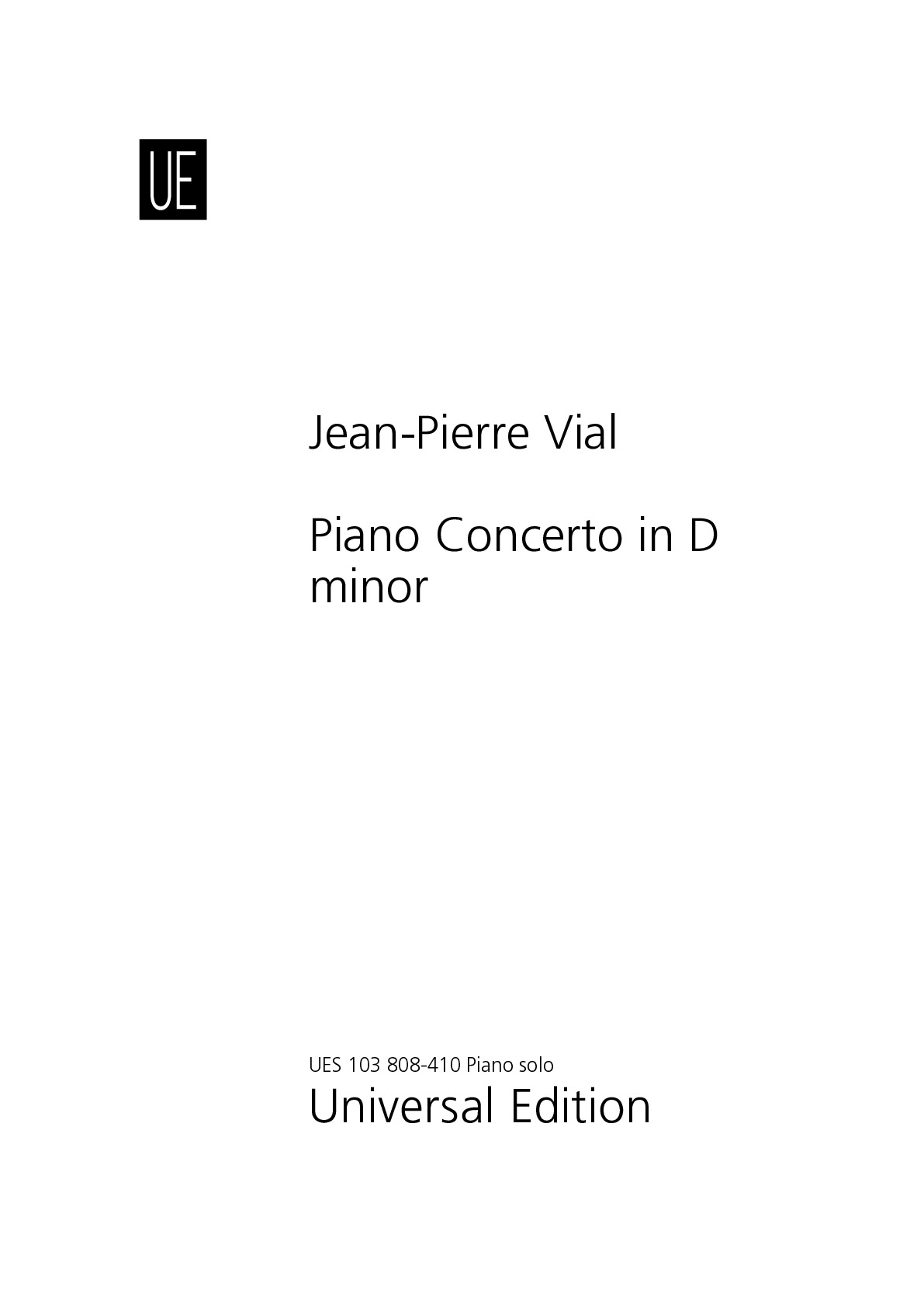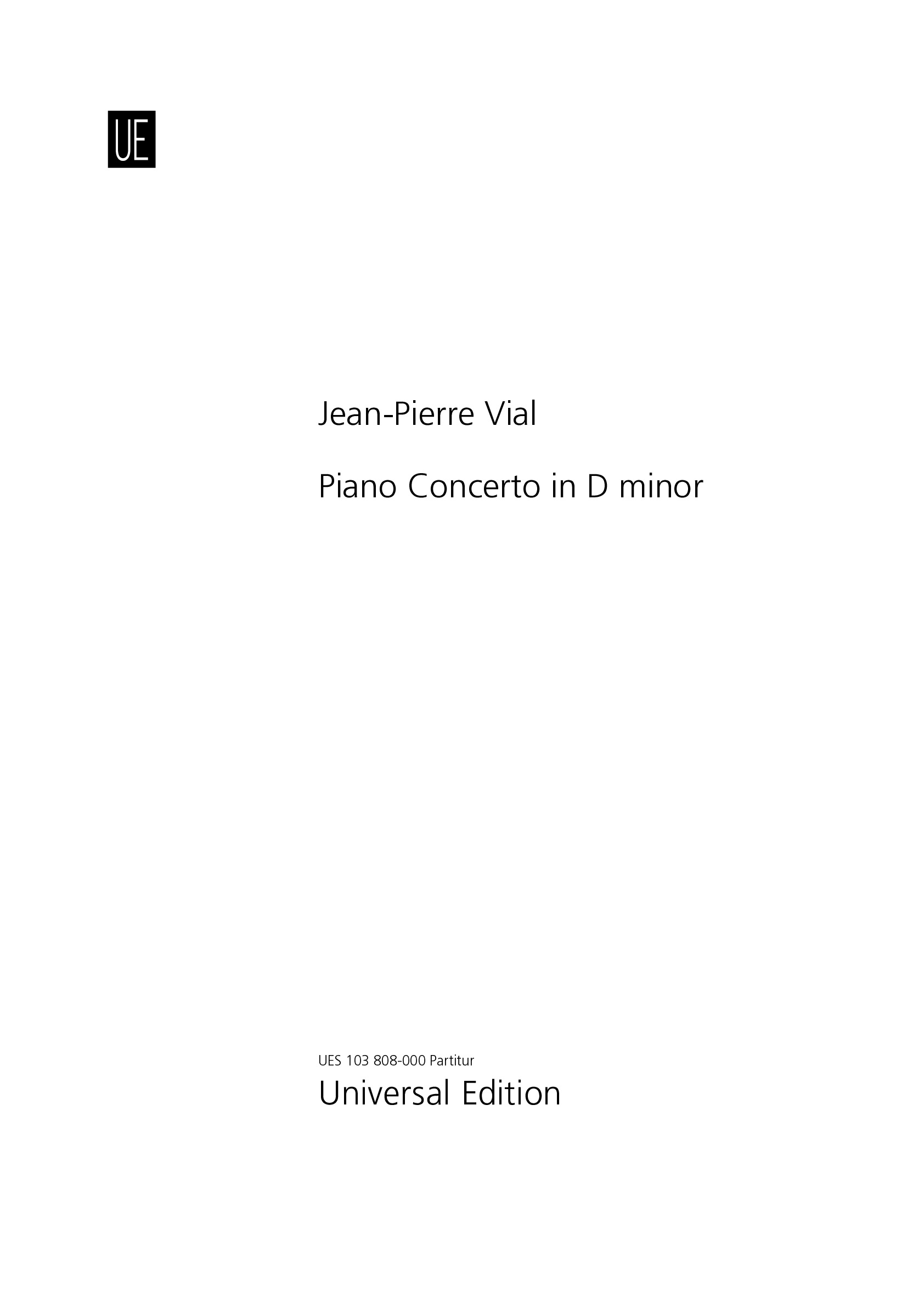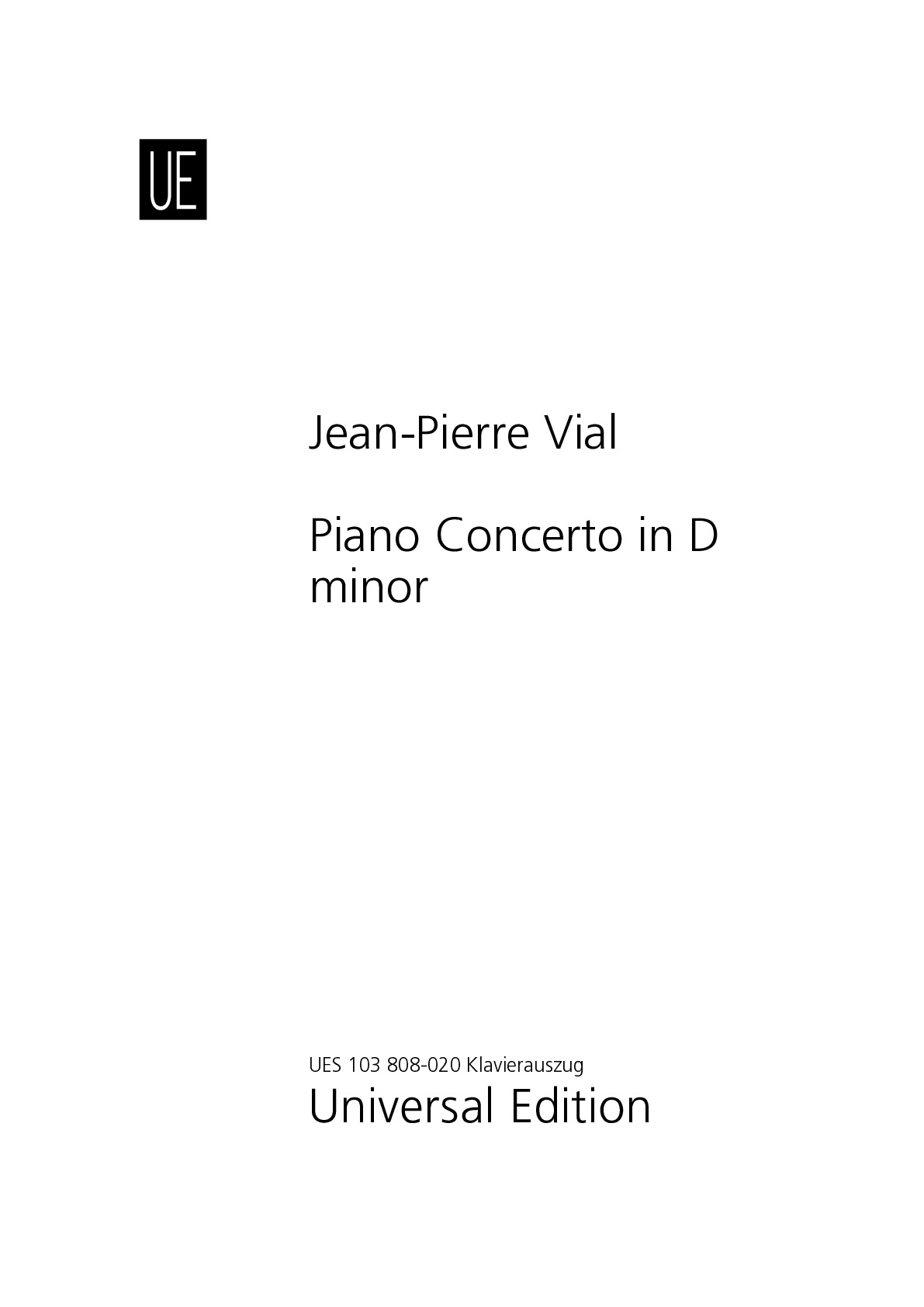

Jean-Pierre Vial
Piano Concerto in D minor
Short instrumentation: 2 2 2 2 - 2 2 2 0, str
Duration: 31'
Solos:
piano
Instrumentation details:
1st flute
2nd flute
3rd oboe
4th oboe
5th clarinet in Bb
6th clarinet in Bb
7th bassoon
8th bassoon
9th horn in F
10th horn in F
11th trumpet
12th trumpet
13th tenor trombone
14th tenor trombone
violin I (10 players)
violin II (10 players)
viola (8 players)
violoncello (6 players)
double bass (4 players)
Piano Concerto in D minor
Sample pages
Audio preview
Video
Work introduction
Jean-Pierre Vial composed a first version of the piano concerto in D minor, in 2005, then revised it in 2022 to make it the current version.
The concerto consists of three movements, with two lively movements surrounding a slower movement. (The first version also included a brief scherzo, which belonged more in a quintet than in a concerto and which, for this reason, is absent from the final version.)
The first movement, allegro ma non troppo, begins with a leitmotiv which, by combining the twelve notes of the chromatic scale, leaves the audience with a questioning feeling. The single theme of the movement follows this brief introduction. Then its developments and reversals are interspersed by the initial leitmotiv, sometimes reversed too. After a short piano cadenza, the final developments conclude with a tutti at the end of which an inversion of the notes of the leitmotiv now gives it a conclusive turn.
The beginning of the second movement, adagio, hesitates between both keys of C and D major. After a few piano arpeggios on a syncopated rhythm given by the strings, the piano introduces a melodious theme, first stated in C major by the woodwinds, then forcefully taken up in D major by the piano. The developments of this theme, by the woodwinds and the piano, on the same rhythm given by the strings, is interspersed by the brass stating a second, quite brilliant theme. The adagio ends decrescendo in D major with a descending variant of the initial piano arpeggios, still on the same syncopated rhythm given by the strings.
The third movement, rondo vivace, is based on two themes presented alternately. It begins with the piano exposing the first theme, accompanied by the strings, in the key of D minor with an augmented fourth, while the woodwinds gradually start counterpointing. Then the piano states the second theme, a very rhythmic gavotte, in the relative key of F major with an augmented fourth too, on which the horns in turn start counterpointing. The piano then, in arpeggios, accompanies the developments of both themes, during which the brass gradually enters the scene. The rondo ends with a chromatic rise that the instruments gradually join crescendo to form the final tutti.
What is necessary to perform this work?
- the number of string players mentioned here is indicative.
- this piece requires two trumpets. Even though the full score only refers to Bb trumpets, trumpet parts include parts for both Bb trumpets and C trumpets, so instrumentalists can choose according to their tuning preferences.



